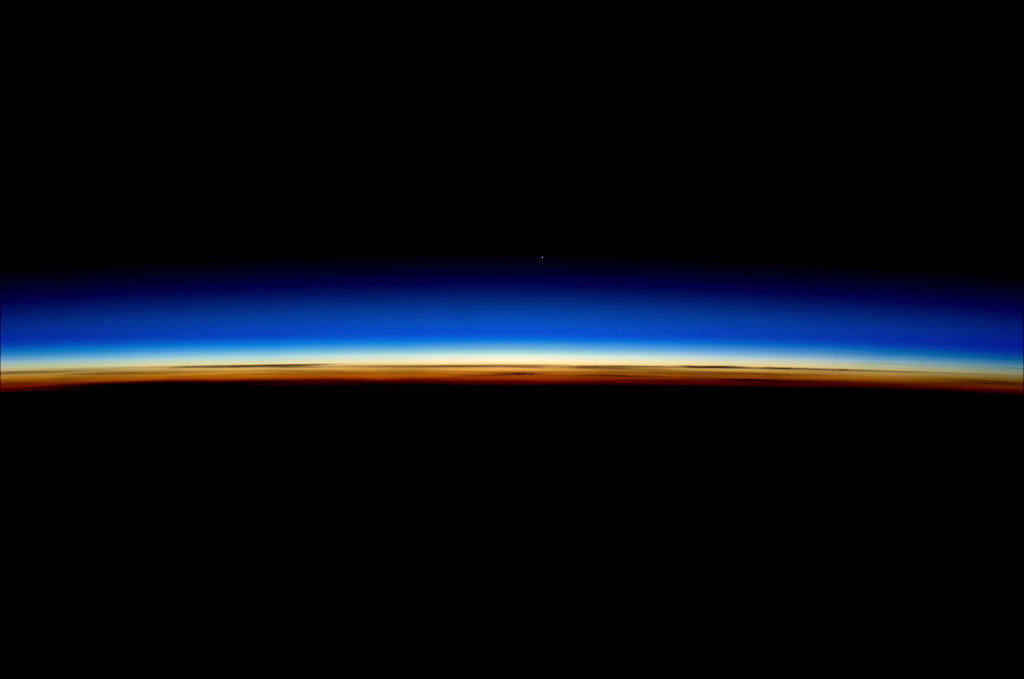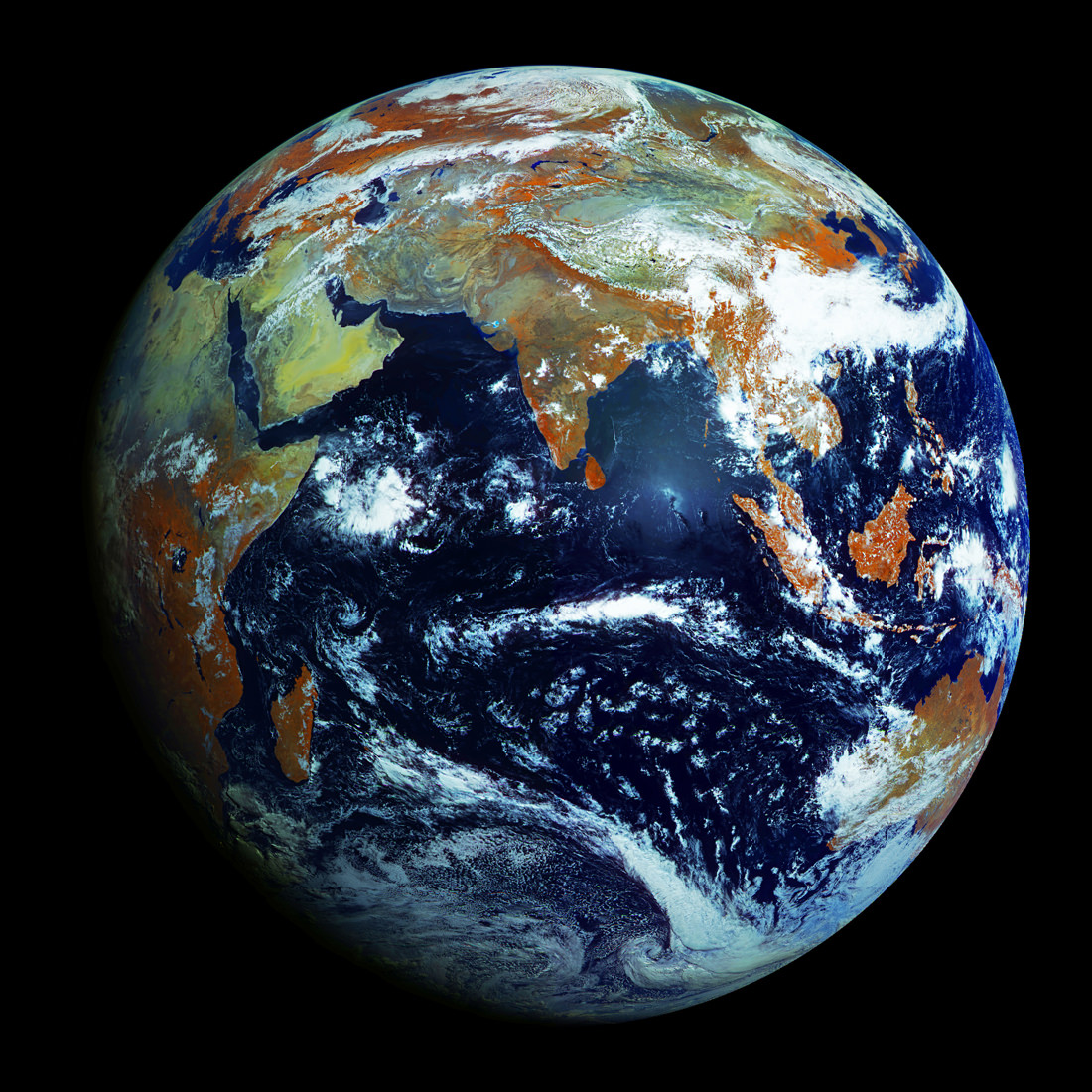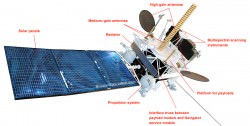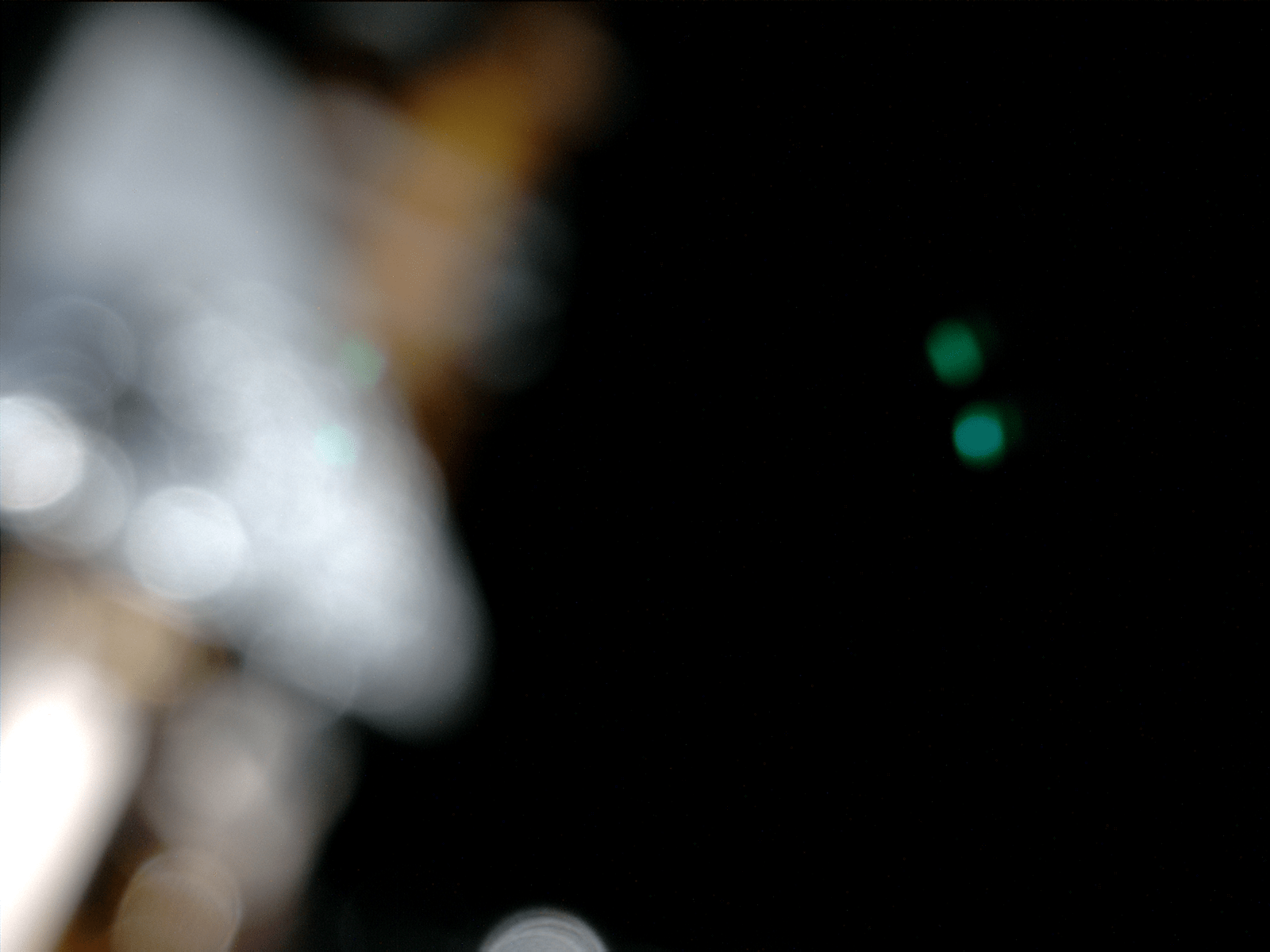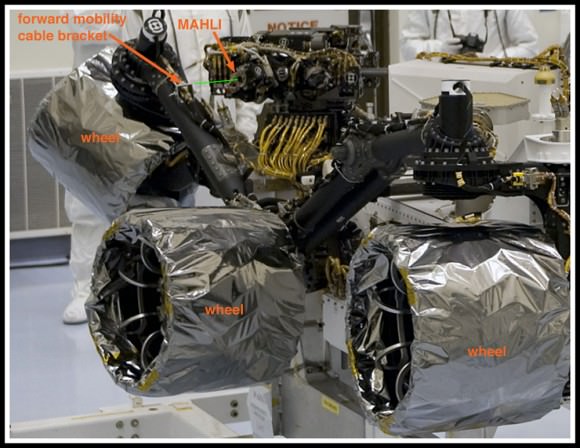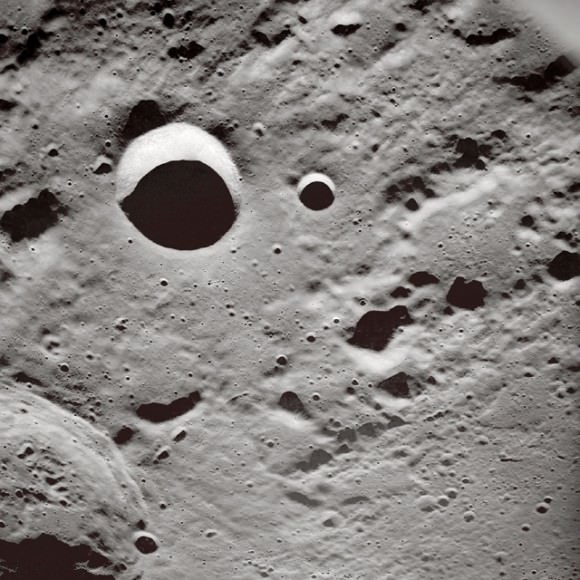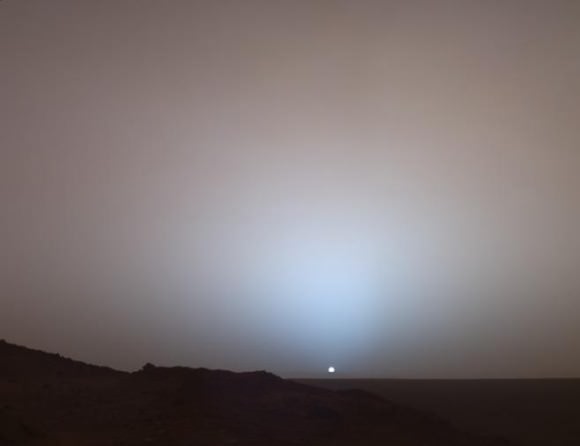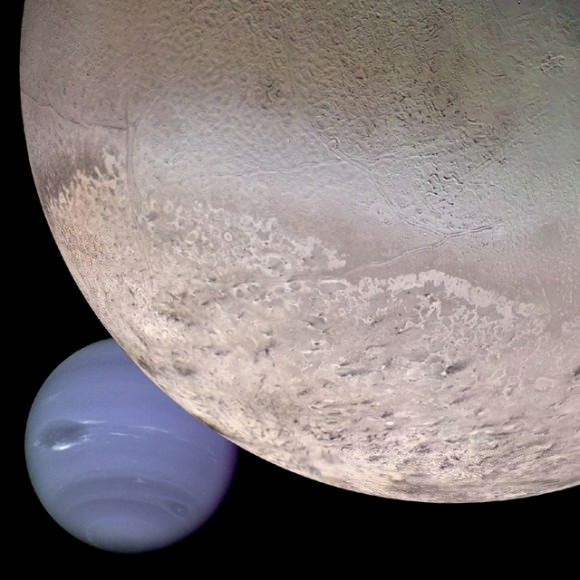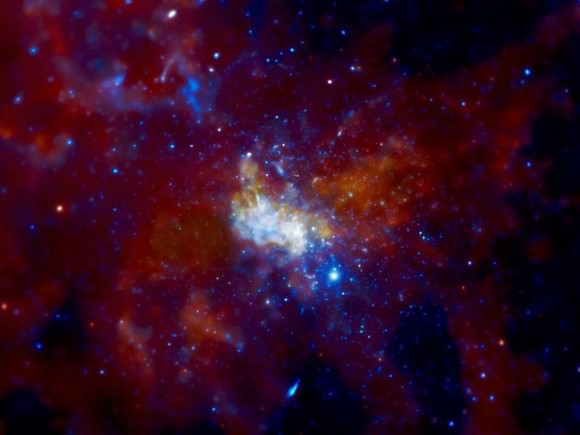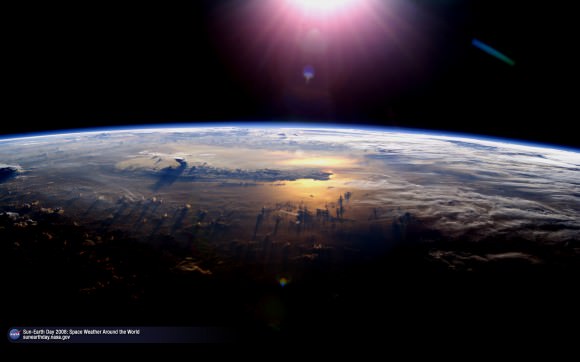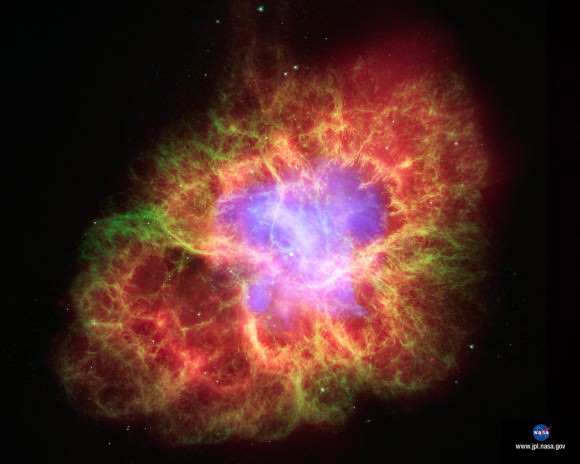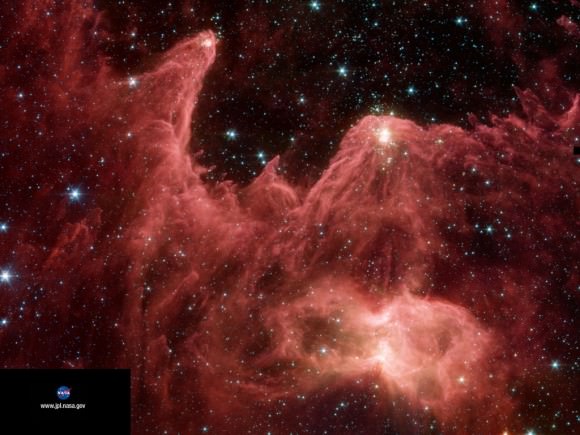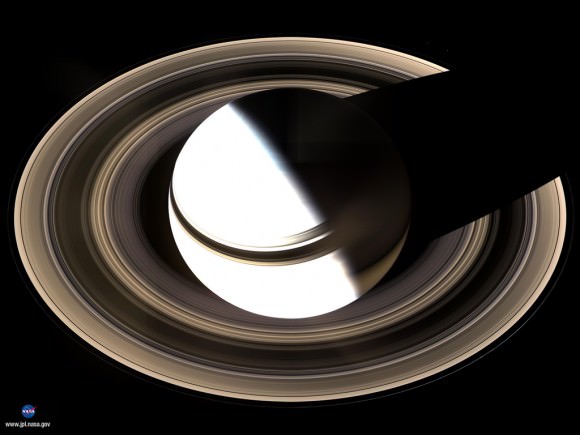These days we see photos of our planet taken from space literally every day. Astronauts living aboard the International Space Station, weather and Earth-observing satellites in various orbits, even distant spacecraft exploring other planets in our Solar System… all have captured images of Earth from both near and far. But there was a time not that long ago when there were no pictures of Earth from space, when a view of our planet against the blackness of the cosmos was limited to the imagination of dreamers and artists and there was nothing but the Moon orbiting our world.
On this day in 1946, before Apollo, before Mercury, even before Sputnik, that was no longer the case.
The image above shows the first photo captured of Earth from space, taken by a camera mounted to a V-2 rocket that was launched from the U.S. Army’s White Sands Missile Range in New Mexico. Taken to the United States by the dozen from Germany after the end of World War II, the V-2 (for “Vergeltungswaffe 2”) missiles were used by the Army to improve on their own rocket designs and also by scientists who were permitted to fill their payloads with experiments.
On October 24, 1946, a V-2 was launched from the Missile Range while a mounted 35mm movie camera captured images every 1.5 seconds. It reached an altitude of 65 miles before crashing back to Earth and, while the camera was destroyed on impact, the film cassette survived. The grainy photo seen above was on that roll, one of our first views of Earth from above the atmosphere.
(Okay, technically there’s still atmosphere above 65 miles — even the ISS orbiting at 260-plus statute miles has to give itself a boost to compensate for drag now and again — but the official aeronautical delineation of “space” begins at about 62 miles, or 100 km: the Kármán Line. V-2 #13 passed that mark in 1946 by 3 miles.)
In the following years more V-2 rockets would be launched, some reaching heights of 100 miles, giving us many more detailed views of our planet as it looks from space and prompting Clyde Holliday, the APL engineer who developed the mounted film cameras, to envision that “the entire land area of the globe might be mapped in this way.”
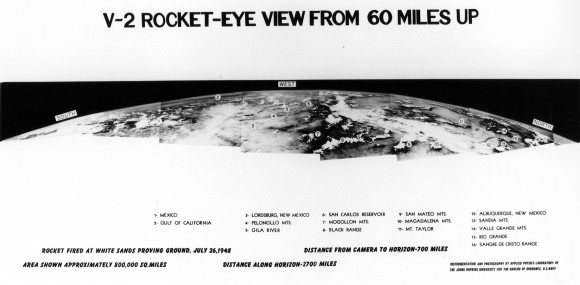
Now, 68 years later, seeing pictures of Earth from space are a much more common, if no less amazing, occurrence. But it all started with that one launch of a missile designed for war but repurposed for science.
Read more here in an article for Smithsonian’s Air & Space by Tony Reichhardt, and watch a contemporary news reel below about the 1946 V-2 launch:
Source: Air & Space

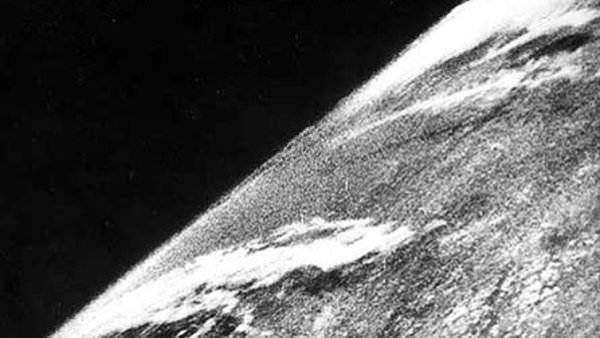
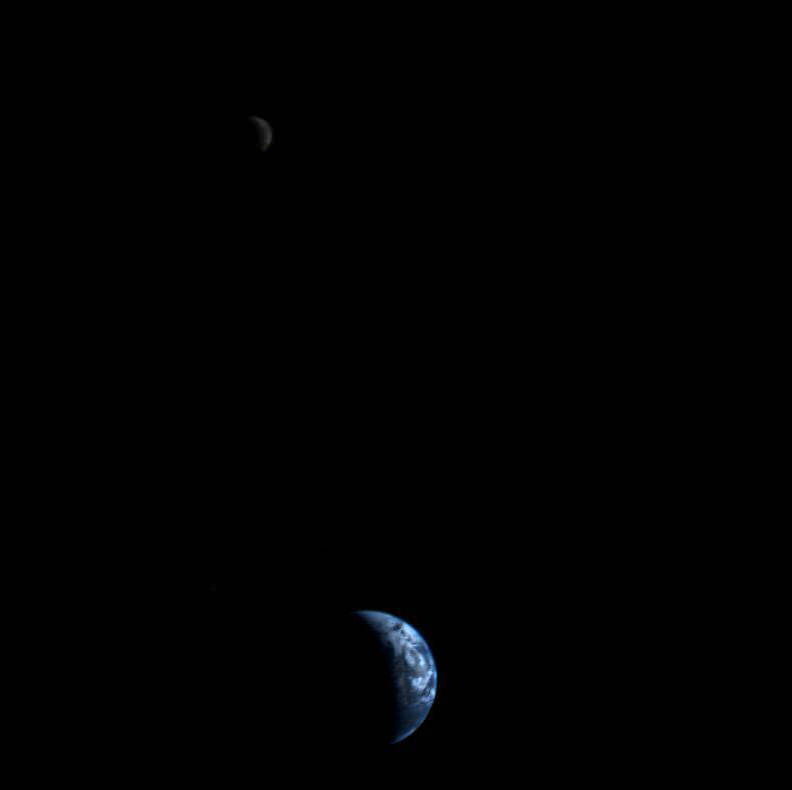
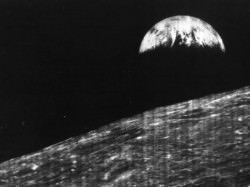
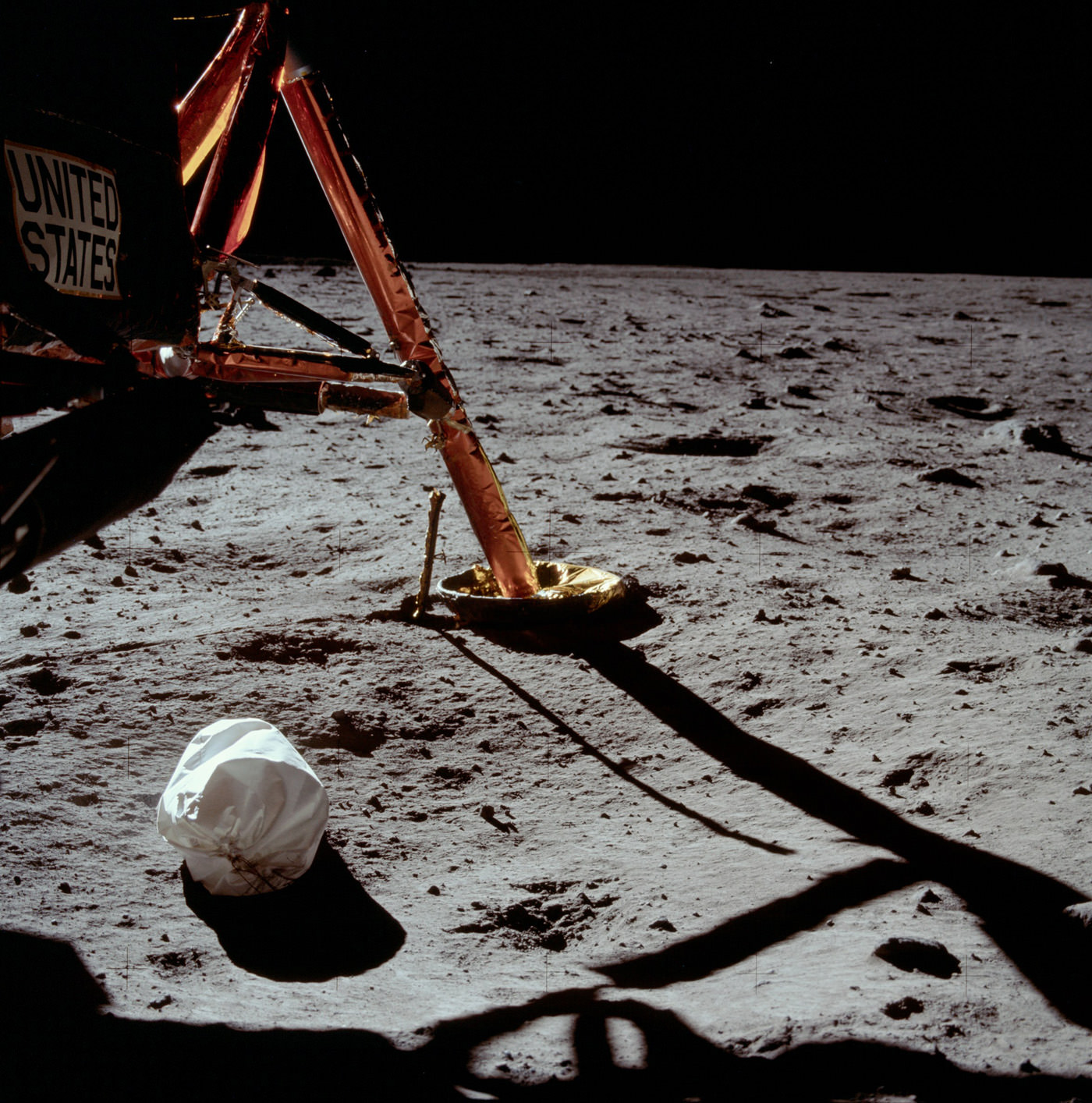
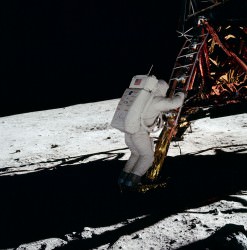 After this image, Armstrong took several more images of the surrounding landscape before fellow astronaut Edwin “Buzz” Aldrin, Jr. exited the module as well. The third man on the mission, Michael Collins, remained in lunar orbit piloting the command module Columbia.
After this image, Armstrong took several more images of the surrounding landscape before fellow astronaut Edwin “Buzz” Aldrin, Jr. exited the module as well. The third man on the mission, Michael Collins, remained in lunar orbit piloting the command module Columbia.